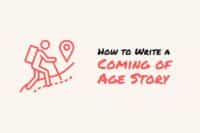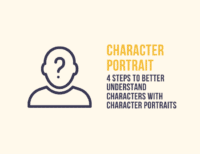I'm happy to introduce our guest today, C.S. Lakin, who is the author of twelve novels (yes, TWELVE!), including the seven-book fantasy series, The Gates of Heaven. Ms. Lakin is a professional editor and loves to help writers improve at their craft. Make sure to swing by her websites, cslakin.com and livewritethrive.com. You can also follow her on Twitter.
Writers of fiction focus heavily on plot, and rightly they should. A good story will have one. A great story will have many plot layers. You could call them subplots, but I find it helps to think of them as layers because of the way they work in your story.
Your Life As Plot
One way that may help you in developing and deepening your plot layers is to think about your own life. You have some big goals—long-term, long-range goals. Maybe it’s to finish college and get that degree. Maybe it’s to start a family and create your dream life with your spouse. In a novel, that would be your main plot, the visible goal your protagonist is trying to reach.
But as that “plot” plays out in your life, other things encroach on or dovetail from that goal. You may be dealing with some personal issue—like a recurring health problem or a former boyfriend who keeps showing up against your wishes.
You may also be dealing with trivial things like trying to decide what color to paint your bedroom, and the paint store guy, who’s completely incompetent, can’t get the color right.
Flavors of Your Story
Life is made up of layers. I picture them by their size and scope. You have the big, fat layer of the main plot on top, then different layers underneath of different thicknesses and flavors. All this creates a very rich cake. If life were just one sole “plot” (“I gotta get that college degree”), it would be boring. And so are novels and short fiction that only have one plot layer.
Life is complex. It’s messy. We’re told to complicate our characters’ lives. Well, this is the best way to do it—by introducing many layers of plot, and not just for your protagonist but for your secondary characters as well.
If you can create three layers at least, think of them as plots A, B, and C. You know your A plot—it’s the main one driving your story. But now you need B and C.
You want B to be an important layer that will help the main plot along—either something that enhances Plot A or runs headlong into conflict with it.
Plot C will be thinner and more trivial, and may even add that comic relief in your tension (picture your character trying to get the paint guy with myopia to see the obvious difference between the two unmatching paint swatches). Believe it or not, Plot C can serve the purpose of revealing a lot of emotion and character (ever thrown a hissy fit at a store when you’re having a bad day?).
Plot Layers Enhance Your Novel's Theme
In a novel I wrote that needed a big revision, I decided to make a secondary character my protagonist. Fran is a bit sketchy in the original story; you know a little about her life, personality, and tastes. She’s a homicide detective investigating the hit-and-run, which frames my story.
But now I needed to bring her to the forefront. Not only did I deepen her involvement with the main plot and increase the number of her scenes, I added an ongoing, growing tension (Plot B) with her teenage son that exposed issues of trust and believability—elements that are key themes of my main plot. Fran doesn’t really believe in her perp’s claims of innocence, nor does she believe her son’s when he insists he didn’t hack the school’s computer.
In the midst of all this, she hates the LA heat, has terrible asthma, so my Plot C is the aggravating element of her air conditioner at home always going on the fritz—which compounds and exacerbates the tension and “heat” in her house and family life.
PRACTICE
Brainstorm a Plot B and a Plot C layer of varying importance that can work together to enrich and enhance your story.
Brainstorm for fifteen minutes. When you're finished, post your practice in the comments section.
And if you practice, be sure to comment on a few other practices, too!








Thanks for the prompt! It ties in well with a comment Joe left regarding my MC’s arc. I’m going to take some time to revisit my outline and make sure I have all of this incorporated.
I have learned SO much here. Thanks again to you hosts your time & efforts & also to everyone who provides feedback. Here’s my practice:
My main plot is a whodunnit. Layer A is my MC’s struggle to bring healing to his son.
Layer B is my MC’s desire to create a life and career of his own, beyond the safety net he is currently ensnared in.
Thanks, Steph! I like your layers. You couldn’t think of a layer C?
Oh, whoops. I didn’t read the directions very well, did I? My main plot – the mystery – is Layer A. The next two are B & C. Actually, I could split those layers into sublayers and those into subsublayers and… Wait, that’s my outline :-).
Ah. Gotcha. That makes sense.
that was a super helpful practice! It helped me to realize that I have been working on the B and C plots this whole time and ignoring my A plot. Eeek. Thanks!
Yikes! Well glad it helped, Candace.
Plot layers are easier to write when you have more character perspectives, or am I wrong? Because there are so many things going on at a time and different characters have different goals, so that’s like having more than one plot? (e.g. A Song of Ice and Fire series)
That’s probably true, Unisse. Although you can certainly have multiple layers even if you write in 1st person, you’re right that it would be easier if you wrote in third and shifted viewpoints.
Plot A While protagonist leads an investigation team to check on missing US government funds in cold war Zaire, they stumble upon an illicit arms trade
taking place on US government property. Who is running it? A US government official, a hired contractor, a local Zairian employee, someone undercover?
Plot B The attractive teammate falls for one of the US Embassy employees. She assumes that he, like she, is a newly hired junior officer in training.
Plot C The State Department asks the team to drug test a new malaria prophylaxis while in Africa, and its psychological side effects create events which make people question the investigating team’s competence (i.e. sanity).
Great post, thanks for sharing your experience and wisdom! Each time I read an article here I become more equipped to deepen and improve my story! I was actually surprised that I could identify a strong plot A as well as a plot B and C in my novel and even a potential D. Now I need to go back and make sure I’m developing them purposefully. Thanks again!
Thanks for making subplots seem so do-able! A+B+C=cake. love it!
Plot A: Jenae, a no-nonsense microbiologist, discovers crucial facts about her father’s past only after her parents die in a horrific car accident. The information she uncovers forces her to challenge all of her previous assumptions about life and love.
Plot B: Jenae’s insightful boyfriend Trent cannot handle his role in the tragedy. (Her parents died in his 1973 muscle car. He’d allowed her aging father to drive it in the snow).
Plot C: As Jenae escapes her current reality, she continually collides with Trent’s colorful triplet sisters, brave young souls in skinny jeans who soak up life despite an unusual fascination with death.
Thanks Susanne for offering the ‘layering’ analogy. Your story about the manuscript revision making Fran the protaganist really resonated with me. (Nancy’s and Steph’s examples helped, too.)
I had been identifying themes and subplots but I can see that I was rolling too much up into the main plot. I like the idea of creating recognizable layers of the MC’s life. Clearly differentiating between my A and B plots is important, and until now it’s been a little hazy. The good news is that I had included what would be considered the C plot, but it will need tweaking depending on how I sort out the A and B plots. Guess I know what I’ll be thinking about as I take my dog for a very long walk today!
Linda A Janssen
This was very helpful. Thanks for the good advice.
Love the ‘cake’ analogy. Thanks for explaining this in an easy to understand way.
No! No I don’t! It’s awful! My novels turn out too short because they’re not sufficiently complex!
Thank-you, you’ve given me some good pointers that I should be able to go back and use in my current project.
Great! I’m so glad this helped, Melissa.
I’m glad I was hopping some of your recent topics- this one of plot layers is exactly what I’m working on right now. I was having some of these exact questions. Thank you for posting on this topic:)
No problem, Stacey. Glad you found it!
this is greaT! i love this!
I don’t know If I got it right, but here it goes:
Plot A: A young girl and her sister die. They wake up in the world of the souls, much resembling the world of the living, where poverty and ranks play an important role.
Their goal is to climb the rank ladders to escape poverty and despair.
Plot B1: The older sister is quite talented and because of that, she’s forced into a special rank. The siblings were broken apart.
Plot B2: The younger sister has to manage to survive all alone. A noble man notices her and falls in love. She’s is scared and agrees for the sake of survival, but plans to escape his grip someday.
Plot C1: The older sister gets adopted by a noble house. When finally both sisters meet they discover that their houses are in war with each other
Plot C2: The older sisters falls in love with a high ranked soldier, but they are not allowed to be together for she is noble.
Sorry about grammar and the long story, and if I messed up. Just thought I would put it out there for fun.
I like how you think in plots. I can see where both sisters and maybe their suitors as well could have a lot of room for death and rebirth within this framework. It also leaves a lot of room for social commentary.
Todd said “You’ve never looked more beautiful than you look today, but I’m married and I can’t see you anymore”. He didn’t know about the baby when he said that. Anna Lee didn’t know she was pregnant then either. She knew something was going on but not exactly what. She was very young. She had on jeans and earrings made of feathers and bare feet when he said that to her, when he told her she’d never looked more beautiful. She felt the earrings bushing against her neck.
Anna Lee had an abortion. She wanted to have the baby. She was going to name it something like Neil or Joanie. She thought it was a boy. She felt it’s life inside of her. The baby lived for just a little while, but she knew it so well during that short time that it become attached to her soul.
Anna Lee was a hippie. She was poor and not responsible.That’s what her mother said. Her mother said “I don’t think you are fit to raise a baby.” Her mother took her to the clinic.
The clinic doctor looked sick when he saw the baby and he put it in a bag and the nurse took it away. She never could forget that, how that bag looked, how something still warm and soft was inside of it.
She saw ads on TV showing empty swings that were swinging and said things about lives not lived. She smoked cigarettes and drank wine. She went back to school and got an education.
When the commercial came on again she pictured a baby swinging on a swing with blonde hair like hers and long strong legs to push off with. The child wasn’t laughing though. Their eyes met. She drank another glass of wine and went for a walk in the warm evening. She walked to the beach and looked at the ocean.
She married once, no children, thought God had made her barren. She married again. She was thirty-eight. She had a daughter when she was thirty-nine. Thankyou she thought.
Connie, wasa poor uneducated woman whom Anna Lee worked with at the hospital. Connie had a fifteen year old daughter who was pregnant. Connie was upset about it, she said,
“All that school. She did so good. Now I don’t know. I wanted her to do good. I wanted her to get some education and do some good.”
Connie was talking Anne Lee because Anna Lee had finished school, had gotten a good job, had “succeeded”. Connie was ashamed of her daughter because she would only be another unwed, uneducated, food stamp mother.
“All that telling her how she needs to pull herself out of the mess at home, how she could get away from being poor, all those words went for nothing. I was wasting my breath, and now she’s going to have a baby. She ain’t nothing but a baby herself,” was some more stuff Connie said.
“She isn’t going to get an abortion is she?”
“No Lord, no,” said Connie. “No honey. We don’t believe in that. Not in my family we don’t.”
And Anna Lee started to cry. They were sitting in the break room, smoking. “
That’s good. That’s real good that she’s going to have her baby,” Anna Lee said. “You know you can be criticized for having too many kids and being poor and for having sex before you get married, but the people who blame you for that aren’t people who love you anyway.”
Then Anne Lee told her the whole thing about the abortion and the empty swing, and how each year in the spring when Anne Lee’s baby would have been born, she thought about how old it would have been if it had lived. She told Connie, “He or maybe she, but I think that baby was a he, would have been twenty this year.”
Connie listened, she looked at Anna Lee. Then her eyes rolled up, and she held up her hands, and Connie began to speak/sing in a strange way. She prayed and she cried, and her body wove about like a tree in the wind, and Anne Lee cried. God was there. She was forgiven, had already been forgiven.
Anne Lee tries to remember that day with Connie and God, every now and then, because sometimes she still thinks about that baby. That baby would have been more than forty now. Anna Lee thinks about that child on the swing when she looks at her green garden or at the dark river running under the bridge where she walks. When Anna Lee feels the beauty of this world she’s sorry again and when she looks up and sees the beauty of the sky she’s forgiven again.
Woah. What an opening!
Plot A: Charlie, a wounded soldier in the middle of WWI, takes in Holly, a lost girl, whose house was ambushed and whose parents were kidnapped by unknown assailants.
Plot B: Charlie’s lost contact with his family after his injury, and he’s searching for them, especially his brother, who was last seen on the frontline at River Marne.
Plot C: Charlie edits papers to support himself and Holly, in addition to receiving help from a ‘friend’ called Alex. Holly reads over his shoulder as he works, and he soon realises that she loves books, and has a strange way of communicating with them.
Hmm… Does that seem like a yummy cake?
Robert Jordan’s Wheel of Time series is an excellent example of multiple plot lines. Likewise, David Eddings’ Belgarion series.
Feather on the Breath of God. My novel, set in a fictional country town. The antagonist is the local banker. Each of the story lines focus upon individual townsfolk – primarily the Anglican Minister and the visiting nurse – plus also
an owl and some crows how behave as owls and crows.
Each story line relates to the townsfolks’ struggle in a harsh economic
climate, with a banker focused upon his own accumulation of income
and advancement.
The church is struggling, as the congregation has less to tithe. The
Bishop advises the minister to find alternative ways of income. The
banker’s wife struggles with poverty, with reactive children, and her
husband has a heart attack.
The bank closes. The township is dying as businesses close down, people
move elsewhere.
The plot lines come together when the banker returns. His wife, backed up
by the townsfolk, refuse to let him get off the V-Line bus. And the
Minister publishes a book based on his parish. People eagerly read
and discuss his work. None of them actually see themselves in the
characters.
Hopefully, this novel will get published.